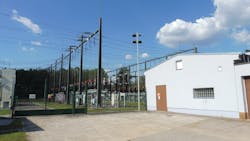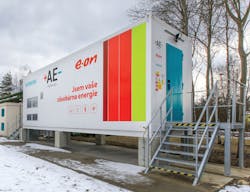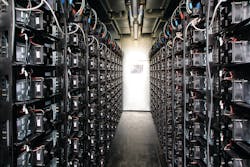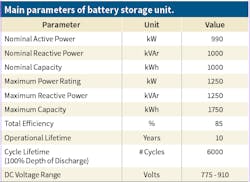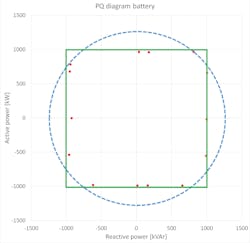Whenever a new and potentially disruptive technology emerges, it can result in resistance from established competition, especially in the conservative environment of the electric power industry. This situation has arisen in the Czech Republic, where currently the development of large battery storage units has come to a temporary halt as a result of the current legal and regulatory framework.
The Czech Republic has an established reliable energy industry with a long history. It recently was ranked the 16th best in the world by the World Energy Council´s 2019 Trilemma Index based on its combined performance in energy security, equity and environmental sustainability. The primary sources of electrical energy are coal-fired and nuclear power plants. However, the Czech Republic saw a solar boom between 2008-2012, when a national subsidy was introduced for photovoltaic (PV) plants that resulted in massive investment in these facilities. This boom led to a significant rise in electricity tariffs for consumers because of the renewable energy subsidies built into the tariffs.
There is now a significant share of PV plants with an installed capacity of 2 GW in the nation’s total generating capacity of 22.4 GW. However, these units supply only 2% of total annual electricity consumption. The solar boom created a significant nationwide backlash against large-scale PV plants and their owners, sometimes referred to as solar barons. The rate of new installations declined as a result. Therefore, the Czech Republic’s electricity industry remains dependent on fossil power plants, which also are the main provider of ancillary services for the transmission system operator.
Energy Storage
Electricity storage in the Czech Republic is available from pumped hydro storage plants, which have a significant amount of installed capacity, namely 1.18 GW. It is regarded in law and regulation as a special type of power source, as the term “electricity storage” is not yet recognized in the current Czech Energy Act. Also, for electrochemical batteries, their only application to date has been to provide uninterrupted power supplies for facilities such as dispatching centers, hospitals and other key infrastructure facilities.
The new entrant to this environment is battery energy systems, and reports regarding their role in pilot projects in T&D systems are available from around the world. The cost of batteries, especially lithium-ion (Li-ion) subtypes, have been falling steadily since 2010, driven primarily by the needs of the electric car industry. In 2014, E.ON, SE, launched an enterprise-wide project to assess the potential of Li-ion batteries in its regional units. ECD is the distribution network operator (DNO) in South Bohemia and South Moravia, Czech Republic.
More than 70 pilot projects were examined. Most of them were rejected because they did not have a strong business case, but some received approval for development. One such approved pilot was a battery storage project in the Czech Republic, with the primary focus on mitigating trade imbalances for the E.ON Czech Sales company as well as exploring new use cases for storage units in general.
In 2016, prior to selecting a battery supplier, an official request for clarification was sent to the Energy Regulatory Office (ERO), which serves as an independent regulator in the Czech energy industry. The request asked for the treatment of battery storage facilities with grid-relevant power to be covered under existing legislation. Technically, the facility could be considered a combination of a power converter-based generator (during discharging) and a typical load (when charging).
Although legally the matter was unclear, the first response received from the ERO was, in their nonbinding opinion, such a facility had to be considered a source of generation and, therefore, generation should be subject to the same connection and licensing processes as a typical 1-MW PV power plant. Therefore, the project was accepted on these conditions and E.ON management continued with the deployment of the battery storage unit.
First Grid-Scale Project
The first grid-scale (>1 MW) battery storage unit in the Czech Republic was installed in Mydlovary, South Bohemia, near a biomass power plant. Connected to ECD’s network, the battery storage unit is a Li-ion battery, nickel-manganese-cobalt (NMC) subtype, owned and operated by E.ON Ceská Republika, a sister company to ECD. While the battery modules are made by Samsung, the whole unit is a turnkey product of Siemens, which provided the remaining elements and engineering.
The main low-voltage block contains battery cells and two 800-kVA power converters that transform the direct-current output into 400 V ac. This block also contains the battery management system, the terminal for local operation and the communication switchgear for remote control of the unit from several load dispatching centers. The second block is a conventional 22/0.4-kV transformer station with 22-kV switchgear. The battery is connected to an adjacent 110/22-kV grid substation by a 22-kV underground cable of 53 m (174 ft) in length.
Construction of the unit began in October 2017 and was commissioned and put into trial operation in February 2018. While the main end user of the battery is E.ON Sales dispatching, ECD — as the DNO in the region — has access to remote control and information about the state of the battery. The DNO can use the battery and stored energy in case of emergency, and battery control is set up to give priority to the commands from dispatch. When the DNO has control, other end users’ commands to the energy management system are blocked.
This project received wide-scale advertising attracting many stakeholders in the energy industry, including the PV plant owners from the solar boom that regarded the ERO’s decision as a sign of a major change in the Czech electric power market. Experience from pilot projects in other countries suggested battery units are very suitable for the provision of frequency containment reserve (FCR), because of their rapid response and ramp-up time.
Battery storage projects that focused on this service were profitable abroad already. As a result, just prior to commissioning the Mydlovary battery station, ECD received dozens of requests on short notice for the connection of storage units. In total, an additional 130 MW of battery storage capacity was requested across the utility’s distribution network.
Czech Energy Regulation
While a single 1-MW unit located on a well-managed distribution network and directly connected to a primary substation does not pose any operational challenges for a DNO, the connection of 130 MW in the form of battery storage units that can alternate between supplying and consuming electrical energy several times per minute presents a completely different proposition. With the shadow of the solar boom still present, the ERO decided the operation of large battery storage facilities could not be considered as generation units and, until energy storage and the operation of these units was precisely defined in the Energy Act, no license could be granted.
This decision brought existing stand-alone storage units into a gray area, whereby they are operable as a general business but not eligible for the provision of ancillary services on the energy market. As a result, outstanding requests for new connections have slowly been withdrawn or expired, and only existing pilot projects remain in commission. The battery storage unit in Mydlovary continues to provide a means to mitigate trade imbalances; however, without revenue streams from ancillary service provisions, the business case is adversely affected.
Restructuring of the Czech Energy Act is planned for 2020, but it is not yet clear what changes regarding electricity storage will be implemented. While the Clean Energy Package from the European Commission defines storage units and sets up basic rules about their operation, this might not be implemented into Czech legislation in the short term.
Operational Performance
Despite the regulatory setbacks, battery storage units are not being disregarded. The pilot project in Mydlovary serves as an important source of information for real-life operation. It has been tested frequently by the DNO, and the findings have been positive.
One of the requirements for the storage unit was independent control of the active and reactive power output. The Mydlovary storage unit has a power bottleneck linked to the existing distribution transformer with a rating of 1250 kVA, whereas the power converters and power cell racks can operate up to 1600 kVA. The battery can deliver active and reactive power independently, which means it can provide reactive power regulation in addition to standard operations with active power.
The battery storage unit is designed to have a ramp-up and ramp-down in 15 sec, but on-site measurements have proved the time taken for these two operations is less than 6 sec. Tests to determine this operational swing from when the battery is operated on nominal charging power and maximum reactive power consumption, the state is immediately changed by a single command into a nominal discharging power and maximum reactive power supply mode. The power direction (reversal) switch operates within 650 msec following the command, and the new steady-state condition is reached within another 4.3 sec.
The battery storage unit also satisfied the 85% cycle efficiency requirement; the measured efficiency on the low-voltage side was 89%. On the medium-voltage side, transformer losses decreased the overall efficiency to 87%. All measurements indicate that, technically, even stand-alone storage units can fulfill many roles in changing the network operation environment, from fast response services to long-term reactive power provision.
In the Czech Republic, there also are several examples of battery storage units in commission that are integrated within a larger facility already connected to the distribution network. The combination of a conventional power plant and storage facilities are eligible for ancillary services even under current Czech regulation, though the role of storage units is not significant enough to warrant a good business case on its own. Furthermore, there are examples of micro-outage management, which can be an important use for production facilities sensitive to sudden, short-term voltage fluctuations in the network.
The development of battery storage in the Czech Republic has been slow with the political and legal barriers playing a much more detrimental role than the technical aspects or even the economic benefits. Despite these setbacks, there is every reason to hope battery storage units will become an integral and contributing asset for the Czech electricity distribution network in the near future.
For more information:
Samsung | www.samsung.com
Siemens AG | https://new.siemens.com/global
CIRED | https://www.cired-repository.org/handle/20.500.12455/416
About the Author
Michal Jurík
Michal Jurík received his MSEE degree from the Czech Technical University in Prague in 2013. Since 2015, Jurík has been a project manager at E.ON, gaining experience and responsibility while working with the regional units in the Czech Republic and Germany. In 2017-18, he was responsible for the deployment of the first large-scale battery storage unit for the energy industry in the Czech Republic. Additionally, he now serves as the manager for innovative projects on storage technologies, and consults on and evaluates innovative projects on storage technologies for the E.ON Energy Globe Award.
